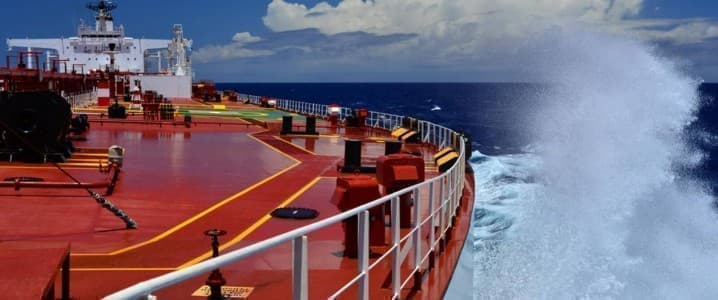From a super contango in April, the Brent Crude futures curve has flattened and flipped to backwardation for the nearest months, wiping out was is seen as one of the most lucrative oil trades Production cuts from Saudi Arabia to the U.S. shale patch, combined with recovering oil demand, have changed in recent weeks the oil futures curve more to the liking of the OPEC+ group.
From a super contango in April, the Brent Crude futures curve has flattened and flipped to backwardation for the nearest months, wiping out the most significant financial incentive for oil trading houses to profit from the price structure a when oil demand crashes.
During the ‘peak lockdown’ period when every major economy except China was under lockdown in late March and early April, the oil market was in a state of super contango. In this market situation, front-month prices were much lower than prices in future months, pointing to a crude oil oversupply and making storing oil for future sales profitable. Traders rushed to charter supertankers for floating storage for several months to a year so they could sell the oil at higher prices later.
In the middle of June, production cuts and an uptick in oil demand helped the Brent Crude price structure flip to backwardation, signaling a tightening of the physical oil market.
Backwardation – the opposite of contango – is the market situation that typically occurs at times of market deficit. In backwardation, prices for front-month contracts are higher than the ones further out in time.
Backwardation is currently only seen for the next two to three months, but analysts expect the full Brent futures curve to be in backwardation by the end of the year thanks to recovering demand. Bank of America (BofA) Global Research, for example, sees inventories in most regions beginning to draw down in the second half of this year, and the full Brent futures curve could flip by the end of the year to backwardation.
A backwardated futures curve is definitely the preferred market structure for OPEC and its allies, which rely on higher front-month prices to help draw down excess inventories and record floating storage, which would push oil prices higher if demand continues to improve.
At the same time, the new shape of the oil futures curve is already discouraging what was the most lucrative trade in the oil market two months ago at the peak of the demand loss.
Related: Chinese Oil Majors Could Form A Powerful Buyers Club
“Quite simply the contango is no longer there, so it does not make any economic sense to enter into a new floating storage trade, unless the deal was locked in when the contango was sufficient to cover freight costs,” Richard Matthews, an analyst who monitors the trade at E.A. Gibson Shipbrokers, told Bloomberg.
This new phase in the oil market is in stark contrast to the wild rush for chartering oil tankers, either for floating storage incentivized by the super contango, or for the record volumes of Saudi oil that flooded the market in April.
Floating storage has started to recede from record-highs in April in almost every region as demand began to recover from the record plunge.
According to estimates from the International Energy Agency (IEA), floating storage of crude oil dropped in May by 6.4 million barrels to 165.8 million barrels, from its all-time high of 172.2 million barrels in April.
Estimates by Bloomberg showed earlier this month that floating storage of North Sea oil had started to shrink as most of Europe lifted their lockdowns.
Tanker operator International Seaways said last week that it estimates 160-180 million barrels are being stored on ships currently. The strong oil contango earlier this year made it profitable to store oil, “creating a demand for time chartered ships for storage, further reducing ship supply and increasing rates,” the tanker operator said in a presentation to its annual meeting of stockholders.
In recent weeks, however, the contango has decreased, and the short-term floating storage of crude oil is declining, International Seaways notes.
ADVERTISEMENT
For tanker owners, the vanishing of the contango and the record cuts from OPEC+ is bad news for tanker demand and rates. They knew that the super trades with the super contango would not last long and would have to eventually face a new market reality with OPEC+ withholding supply to decrease the glut and increase oil prices.
For OPEC+ and for tanker operators alike, continuous demand recovery would be excellent news – if it holds.
By Tsvetana Paraskova for Oilprice.com
More Top Reads From Oilprice.com:
- Oil Market Optimism Is Entirely Misplaced
- Inside Singapore's $3 Billion Oil Trading Scandal
- How Viable Are Net Zero Strategies For Energy Companies?


















